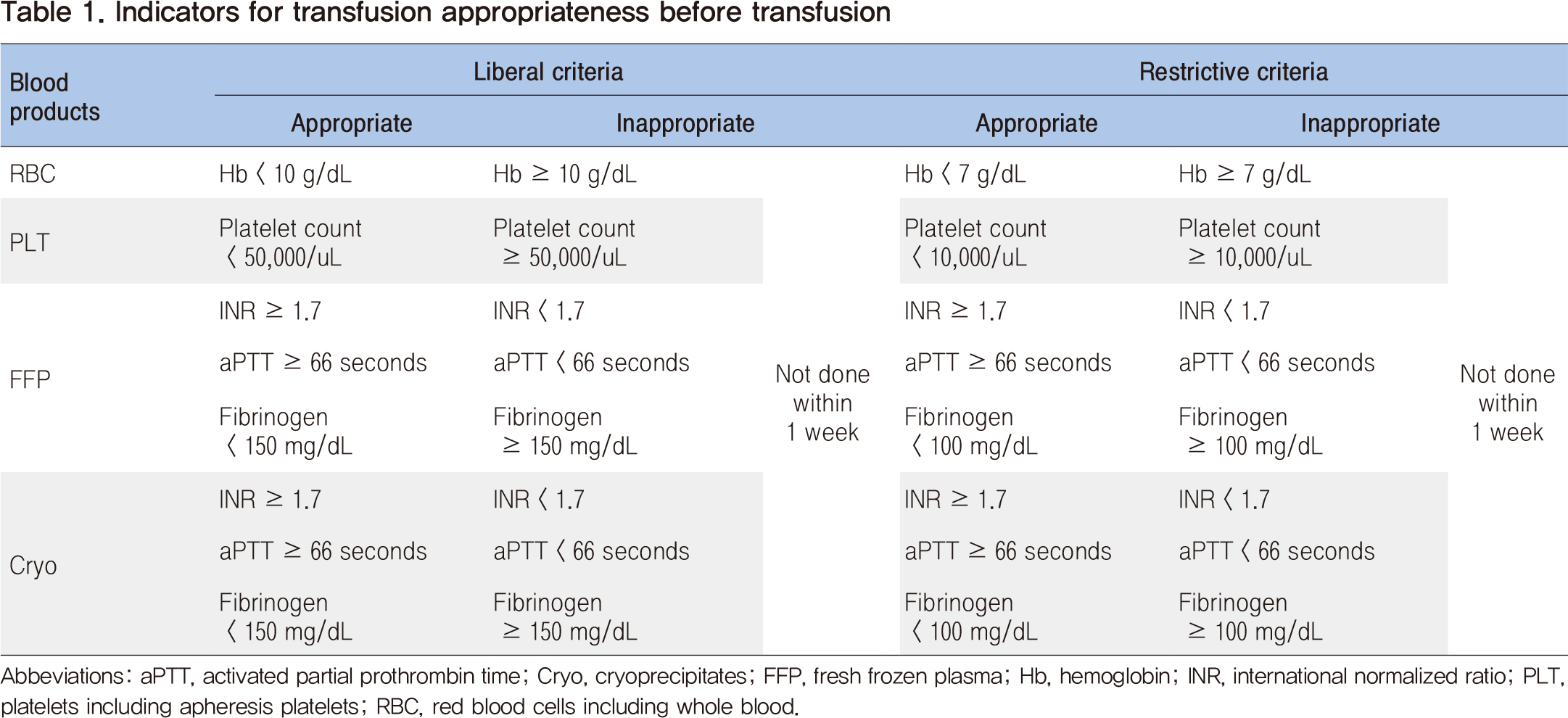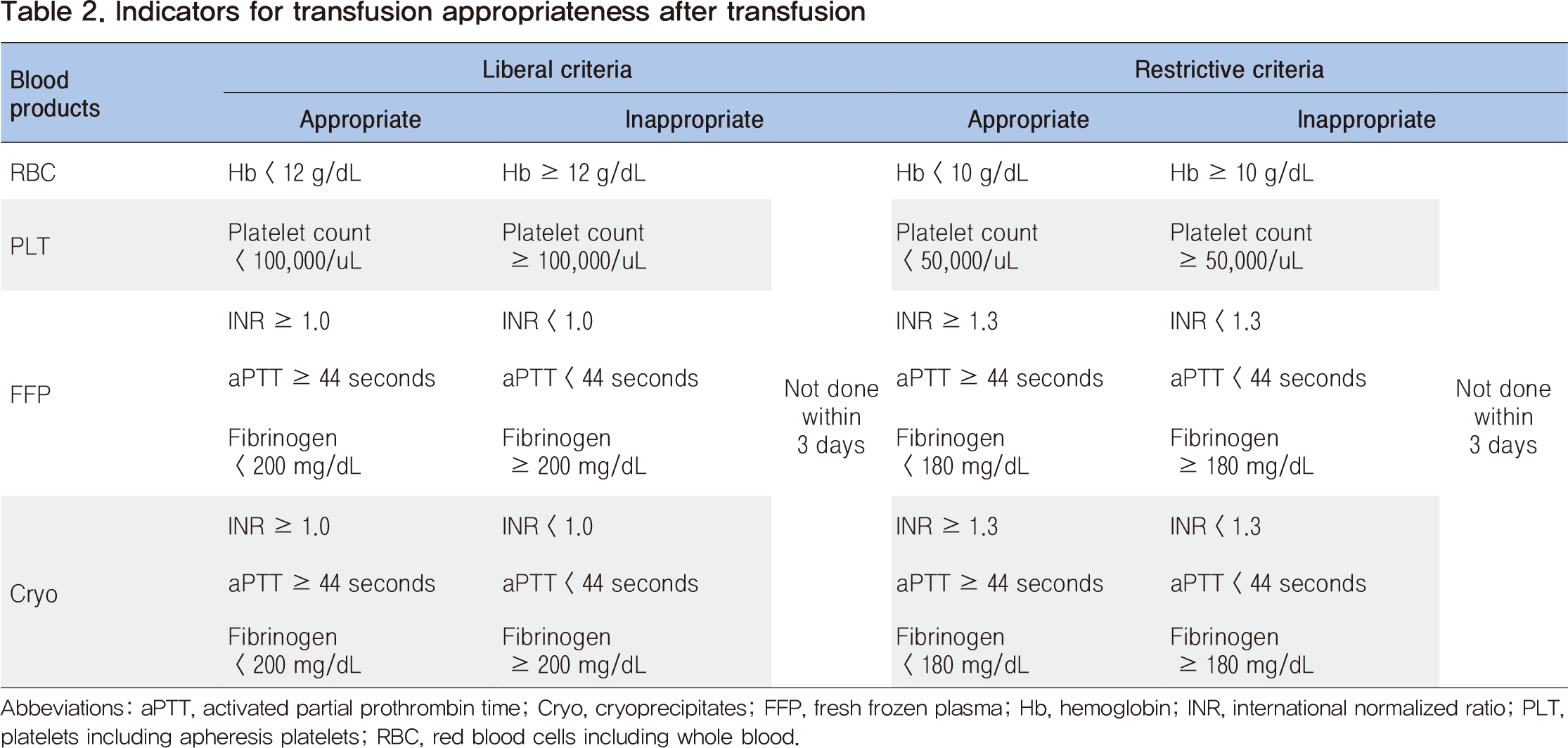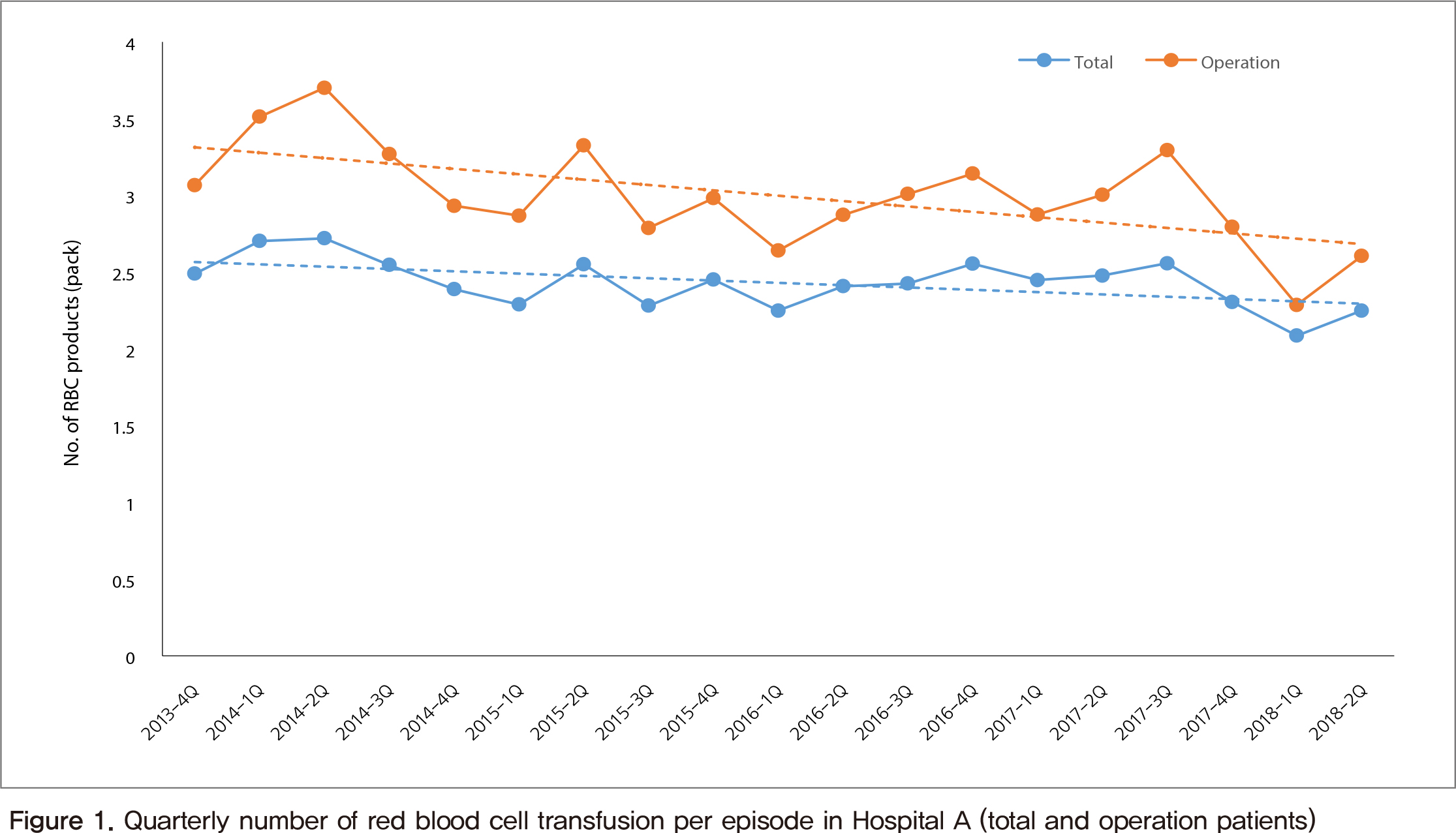contents area
Public Health Weekly Report
detail content area
- Date2019-10-10 21:25
- Update2019-11-19 18:14
- DivisionDivision of Strategic Planning for Emerging Diseases
- Tel043-719-7271
Development of Indicators for Transfusion Appropriateness in Korea
Jin Hyuk Yang, Jin A Oh, Jun-nyun Kim
Division of Blood Safety Surveillance, Center for Organ Transplant Management, KCDC
Tae Hyun Um
Department of Laboratory Medicine, Inje University Ilsan Paik Hospital
To ensure transfusion safety, it is required to evaluate transfusion appropriateness. Objective criteria and indicators for
transfusion should be followed accordingly.
We developed 53 candidate indicators from National Transfusion Guideline 2016, which was published by Korea Centers for
Disease Control & Prevention (KCDC) and The Korean Society of Blood Transfusion. Through expert meetings, consultations
and e-mail surveys, 16 indicators were selected to hold the most relevance; institutional transfusion guidelines, education,
massive transfusion protocol, re-confirmation of blood types of blood products, unexpected antibody screening test, blood
return rate, blood waste rate, transfusion reaction report, case record form, check list utilization, transfusion consent rate,
analysis of frequency and causes of preoperative anemia, one unit transfusion rate, transfusion index, optimal transfusion
rate (quarterly) and optimal transfusion rate of fresh frozen plasma.
The developed indicators will be used to measure the adequacy of transfusions in medical institutions and to study Hospital
Quality Assessment by Health Insurance Review & Assessment Service. KCDC continues to improve indicators to properly
appraise transfusion safety and adequacy.
Keywords: transfusion, appropriateness, indicators



 This public work may be used under the terms of the public interest source + commercial use prohibition + nonrepudiation conditions
This public work may be used under the terms of the public interest source + commercial use prohibition + nonrepudiation conditions